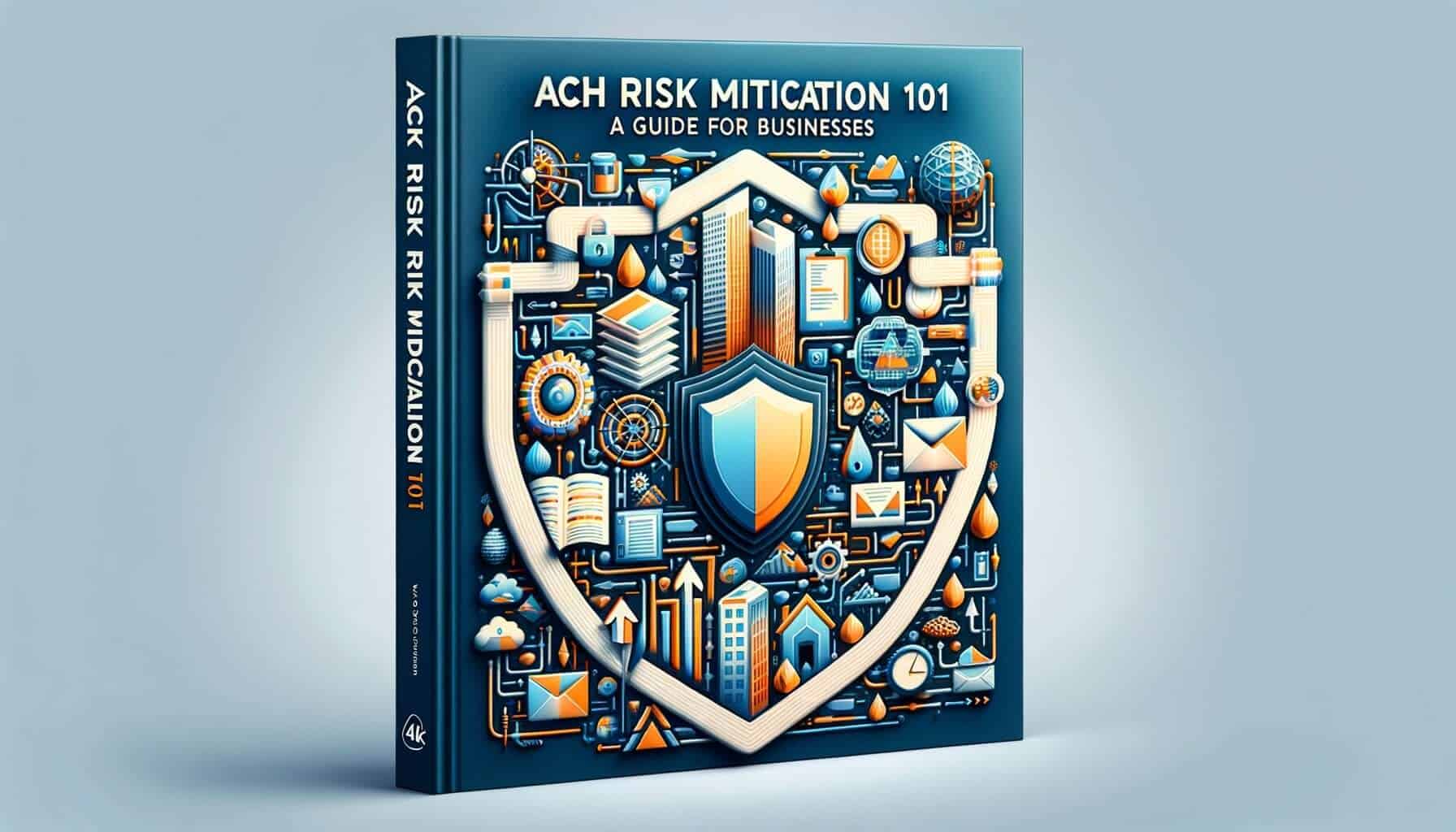
By Ava Owen April 22, 2025
In today’s digital age, businesses rely heavily on electronic payment systems to streamline their financial operations. One such system is the Automated Clearing House (ACH), which facilitates the transfer of funds between bank accounts. While ACH transactions offer convenience and efficiency, they also come with inherent risks that businesses must be aware of and mitigate.
This comprehensive guide will provide businesses with a thorough understanding of ACH risk mitigation, covering everything from the basics of ACH transactions to best practices for secure payment processing.
Understanding the Basics of ACH Transactions

To effectively mitigate ACH risks, businesses must first understand the basics of ACH transactions. ACH is an electronic network that enables the transfer of funds between financial institutions. It processes various types of transactions, including direct deposits, bill payments, and business-to-business payments. ACH transactions are governed by the National Automated Clearing House Association (NACHA), which sets rules and standards to ensure the security and efficiency of the system.
ACH transactions involve three main parties: the originator, the receiver, and the financial institutions involved. The originator initiates the transaction, while the receiver is the intended recipient of the funds. Financial institutions act as intermediaries, facilitating the transfer of funds between the originator and the receiver. ACH transactions are typically batched and processed in bulk, which allows for efficient and cost-effective transfers.
Identifying Common ACH Risks for Businesses

While ACH transactions offer numerous benefits, they also expose businesses to various risks. It is crucial for businesses to identify and understand these risks to effectively mitigate them. Some common ACH risks include:
1. Unauthorized Transactions: ACH transactions can be vulnerable to unauthorized access, leading to fraudulent transfers. Hackers may gain access to a business’s ACH credentials and initiate unauthorized transactions, resulting in financial loss.
2. Data Breaches: Businesses that store sensitive customer information, such as bank account details, are at risk of data breaches. If a cybercriminal gains access to this information, they can exploit it to initiate fraudulent ACH transactions.
3. Internal Fraud: Businesses must also be wary of internal fraud, where employees misuse their access to initiate unauthorized ACH transactions. This can occur due to negligence, collusion, or disgruntled employees seeking financial gain.
4. Social Engineering Attacks: ACH transactions can be compromised through social engineering attacks, where fraudsters manipulate individuals into revealing sensitive information or authorizing fraudulent transactions.
Implementing Strong Authentication and Authorization Measures

To mitigate ACH risks, businesses must implement strong authentication and authorization measures. These measures ensure that only authorized individuals can initiate and approve ACH transactions. Here are some best practices for authentication and authorization:
1. Two-Factor Authentication: Implementing two-factor authentication adds an extra layer of security by requiring users to provide two forms of identification, such as a password and a unique code sent to their mobile device.
2. Role-Based Access Control: Assigning specific roles and permissions to employees ensures that only authorized individuals can initiate or approve ACH transactions. Regularly review and update access privileges to prevent unauthorized access.
3. Multi-Level Approval Processes: Implementing multi-level approval processes for ACH transactions adds an additional layer of security. Require multiple individuals to review and approve transactions above a certain threshold.
4. Secure User Credentials: Enforce strong password policies and educate employees on the importance of using unique, complex passwords. Consider implementing password managers to securely store and manage credentials.
Establishing Robust Fraud Detection and Prevention Systems

In addition to strong authentication and authorization measures, businesses must establish robust fraud detection and prevention systems to mitigate ACH risks. These systems help identify and prevent fraudulent transactions before they cause financial harm. Here are some key components of effective fraud detection and prevention systems:
1. Real-Time Transaction Monitoring: Implement real-time monitoring systems that analyze ACH transactions for suspicious activity. These systems can detect anomalies, such as unusual transaction amounts or patterns, and trigger alerts for further investigation.
2. Machine Learning and Artificial Intelligence: Leverage machine learning and artificial intelligence technologies to enhance fraud detection capabilities. These technologies can analyze large volumes of data and identify patterns indicative of fraudulent activity.
3. Velocity Limits and Filters: Set velocity limits and filters to flag or block transactions that exceed predefined thresholds. For example, transactions above a certain amount or frequency can be automatically flagged for manual review.
4. Positive Pay Services: Consider utilizing positive pay services offered by financial institutions. These services allow businesses to verify the authenticity of ACH transactions before they are processed, reducing the risk of fraudulent transfers.
Best Practices for Secure ACH Payment Processing
To ensure secure ACH payment processing, businesses should follow best practices that minimize the risk of unauthorized access and fraudulent transactions. Here are some key practices to consider:
1. Regularly Update Software and Systems: Keep all software and systems up to date with the latest security patches and updates. Outdated software can contain vulnerabilities that hackers can exploit to gain unauthorized access.
2. Encrypt Sensitive Data: Encrypt sensitive data, such as customer bank account details, both during transit and at rest. Encryption ensures that even if data is intercepted, it remains unreadable and unusable to unauthorized individuals.
3. Conduct Regular Security Audits: Regularly conduct security audits to identify vulnerabilities and weaknesses in your ACH payment processing systems. Address any identified issues promptly to minimize the risk of exploitation.
4. Use Secure File Transfer Protocols: When transmitting ACH files, use secure file transfer protocols, such as Secure File Transfer Protocol (SFTP) or Secure Shell (SSH). These protocols encrypt data during transit, preventing unauthorized interception.
Monitoring and Reporting ACH Transactions for Suspicious Activity
Monitoring and reporting ACH transactions for suspicious activity is crucial for early detection and prevention of fraudulent transactions. Businesses should establish robust monitoring and reporting processes to identify and investigate any potential red flags. Here are some key steps to consider:
1. Implement Transaction Monitoring Tools: Utilize transaction monitoring tools that analyze ACH transactions for suspicious patterns or anomalies. These tools can generate alerts for further investigation when potential fraud is detected.
2. Establish Incident Response Procedures: Develop incident response procedures that outline the steps to be taken in the event of a suspected fraudulent ACH transaction. This includes notifying relevant stakeholders, freezing affected accounts, and conducting a thorough investigation.
3. Collaborate with Financial Institutions: Maintain open lines of communication with your financial institution to report any suspicious ACH transactions promptly. Financial institutions have their own fraud detection systems and can provide valuable insights and assistance in investigating potential fraud.
4. Stay Informed about Emerging Threats: Stay updated on the latest trends and techniques used by fraudsters to compromise ACH transactions. Regularly educate yourself and your employees about emerging threats and implement appropriate countermeasures.
Educating Employees on ACH Security Awareness
Employees play a critical role in mitigating ACH risks. It is essential to educate employees on ACH security awareness to ensure they understand the risks and their responsibilities in maintaining a secure payment processing environment. Here are some key aspects to cover in employee training:
1. ACH Basics: Provide employees with a basic understanding of ACH transactions, including how they work, the associated risks, and the importance of secure payment processing.
2. Phishing Awareness: Educate employees about phishing attacks and how to identify and report suspicious emails or messages. Emphasize the importance of not clicking on suspicious links or providing sensitive information to unknown sources.
3. Social Engineering Awareness: Train employees to recognize social engineering tactics used by fraudsters to manipulate individuals into revealing sensitive information or authorizing fraudulent transactions. Provide examples and real-life scenarios to enhance understanding.
4. Reporting Procedures: Clearly communicate the reporting procedures for suspected fraudulent activity. Employees should know who to contact and what information to provide when they encounter a potential security incident.
ACH Risk Mitigation FAQs: Answers to Commonly Asked Questions
Q1. What is the role of NACHA in ACH risk mitigation?
Answer: NACHA plays a crucial role in ACH risk mitigation by setting rules and standards for ACH transactions. It ensures the security and efficiency of the ACH network, helping businesses mitigate risks associated with electronic payments.
Q2. How can businesses protect against internal fraud?
Answer: To protect against internal fraud, businesses should implement strong authentication and authorization measures, such as two-factor authentication and role-based access control. Regularly review access privileges and monitor employee activities for any suspicious behavior.
Q3. What are some signs of potential ACH fraud?
Answer: Signs of potential ACH fraud include unusual transaction amounts or patterns, unauthorized access attempts, and unexpected changes in payment instructions. Businesses should establish monitoring systems to detect and investigate such red flags.
Q4. How can businesses stay updated on emerging ACH threats?
Answer: Businesses can stay updated on emerging ACH threats by regularly monitoring industry news and publications, participating in relevant forums and conferences, and collaborating with financial institutions and industry experts.
Conclusion
Mitigating ACH risks is essential for businesses to protect their financial assets and maintain the trust of their customers.
By understanding the basics of ACH transactions, identifying common risks, implementing strong authentication and authorization measures, establishing robust fraud detection and prevention systems, following best practices for secure payment processing, monitoring and reporting transactions for suspicious activity, and educating employees on ACH security awareness, businesses can effectively mitigate ACH risks and ensure the security of their electronic payment systems.
Stay vigilant, stay informed, and prioritize security to safeguard your business from potential ACH threats.